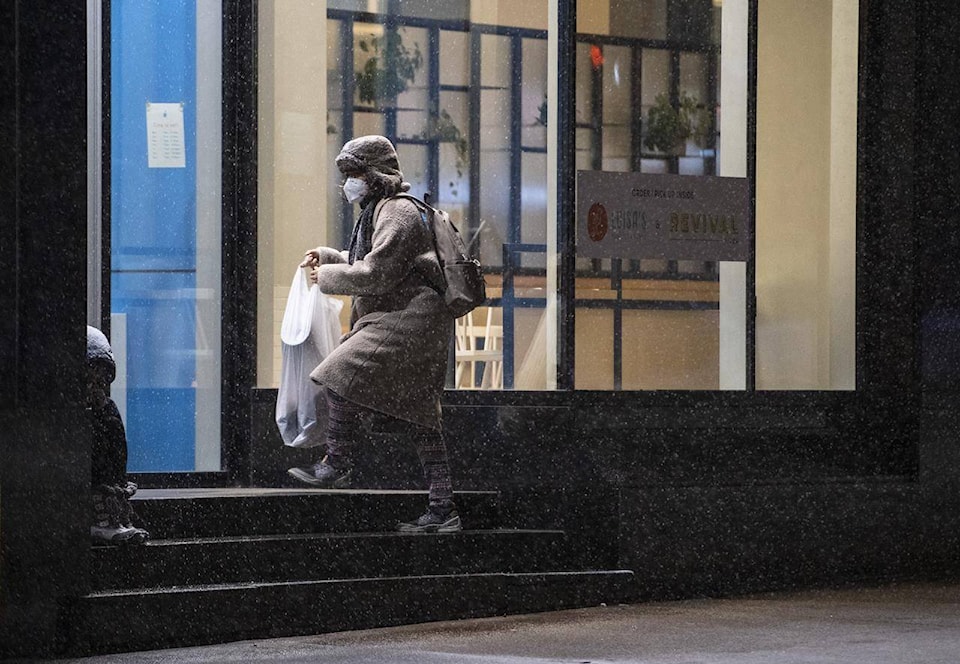OTTAWA — As the number of new COVID-19 cases continues to rise across Canada, the infection rate in Ottawa has been going in the other direction for weeks, putting the city on the right track to flatten the curve of the pandemic once again.
The city’s chief medical officer, Dr. Vera Etches, said much of the credit goes to the people who live here, who have been wearing masks — in some cases, such as on public transit, forced to do so earlier than others across Canada — and staying at home.
There was a time in early October when Ottawa, despite its initial success flattening the curve in the spring, experienced a spike in COVID-19 cases that saw the city have double the number of cases seen in Toronto and Peel Region at that time. Now the number of new cases is once again much lower than in those areas.
There were 55 new COVID-19 cases in Ottawa on Friday, which represents a bigger daily jump from earlier in the week but still puts the city at 5.89 new cases per 100,000 people. Toronto, meanwhile, reported 18.08 new cases per 100,000 people on Friday and in Peel Region it was 37.42 new cases per 100,000.
“It’s really thanks to the people in Ottawa, and thanks to the employers and others who are doing their part to make it possible,” Etches told a news conference this week, adding that people increased their distance from others, wore masks and stayed home when they were sick.
“These are the things that actually can bring COVID down in a community.”
Etches said Ottawa Public Health emphasized the importance of wearing masks early on in the pandemic and in June, the city became the first in Canada to make them mandatory on public transit.
“Building a new behaviour, a new culture where you always have a mask with you when you go out, that’s been in place a little bit longer, that might have helped,” she said.
Meanwhile, employers in Ottawa, a city of just over one million people, enabled people to follow the advice of public health officials by allowing them to work from home, and stay home when they were sick, more than in other cities, she said.
Twenty-four per cent of workers in Ottawa work in public administration jobs, according to Ottawa Employment Hub, the local workplace planning board. Some 120,000 people in the National Capital Region, which includes nearby Gatineau, Que., work for the federal government, which has allowed most of its employees to work from home since March.
“The federal government is leading by example,” said Lavagnon Ika, a professor of project management at the University of Ottawa.
He said managers and directors at the government were often reluctant to allow people to work remotely before the pandemic, but that has changed. “Because of COVID-19, people have learned (how) to make it work,” he said
Ika said information technology companies in Ottawa have also been allowing their employees to work remotely because they already have the technology to do so and their employees are trained to use it.
“If you don’t have a centralized information system for all your teams, it’s not possible to work at a distance,” he said. “I’m talking about the video conferencing tools and artificial-intelligence assistance tools.”
He said some of the high-tech companies in Ottawa had employees working remotely and customers from all over the world before COVID-19, listing homegrown e-commerce giant Shopify as one of them. “They badly need remote work because of a geographical distribution of some of their team members and their clients,” Ika said.
The well-integrated health care system in eastern Ontario has also helped in responding to the pandemic efficiently, said Dr. Robert Cushman, the acting medical director of health for the Renfrew County and District Health Unit near Ottawa.
“What you’ve seen in Ottawa, for example, is there’s very close work between the hospitals, and the public health unit and the city, and this extends out into the peripheral areas,” said Cushman, who was Ottawa’s chief medical officer from 1996 to 2005.
”We’ve been working together on this since the beginning,” he said. “There’s a lot of cohesion.”
Having all the hospital labs working together through a regional association when it comes to testing COVID-19 is another factor, Cushman said, as efficient testing is key to aggressive and thorough tracing of how the novel coronavirus spreads through contacts.
“Is your lab turnaround time sufficiently short so that you can actually catch up and even get ahead of this?” he said, adding that it has been challenging to do this across Canada and even in the rest of Ontario. “If you’re waiting six days for a test, I mean, this virus can get into a second (or) a third generation.”
There were plenty of stories about long lineups at COVID-19 testing sites in Ottawa in September once children headed back to school, but that has also improved, including through the ability to book testing appointments online.
Cushman said he also believes people in Ottawa tend to trust the public health unit and health professionals, which leads to more people following their guidelines.
“There’s a community spirit here to do the right thing,” he said.
But Etches warned people in Ottawa not to relax too much as COVID-19 cases in the city decline. She was speaking Tuesday, when Ottawa reported 19 new cases. On Friday, there were 55 new COVID-19 cases reported.
“We think we’re on the right track, but it’s very tenuous,” said Etches, who is telling families to celebrate Christmas and other seasonal holidays with only people in their immediate households to avoid potential COVID-19 outbreaks.
“Ottawa Public Health has had the highest rate of COVID in early October and we can go back there again.”
